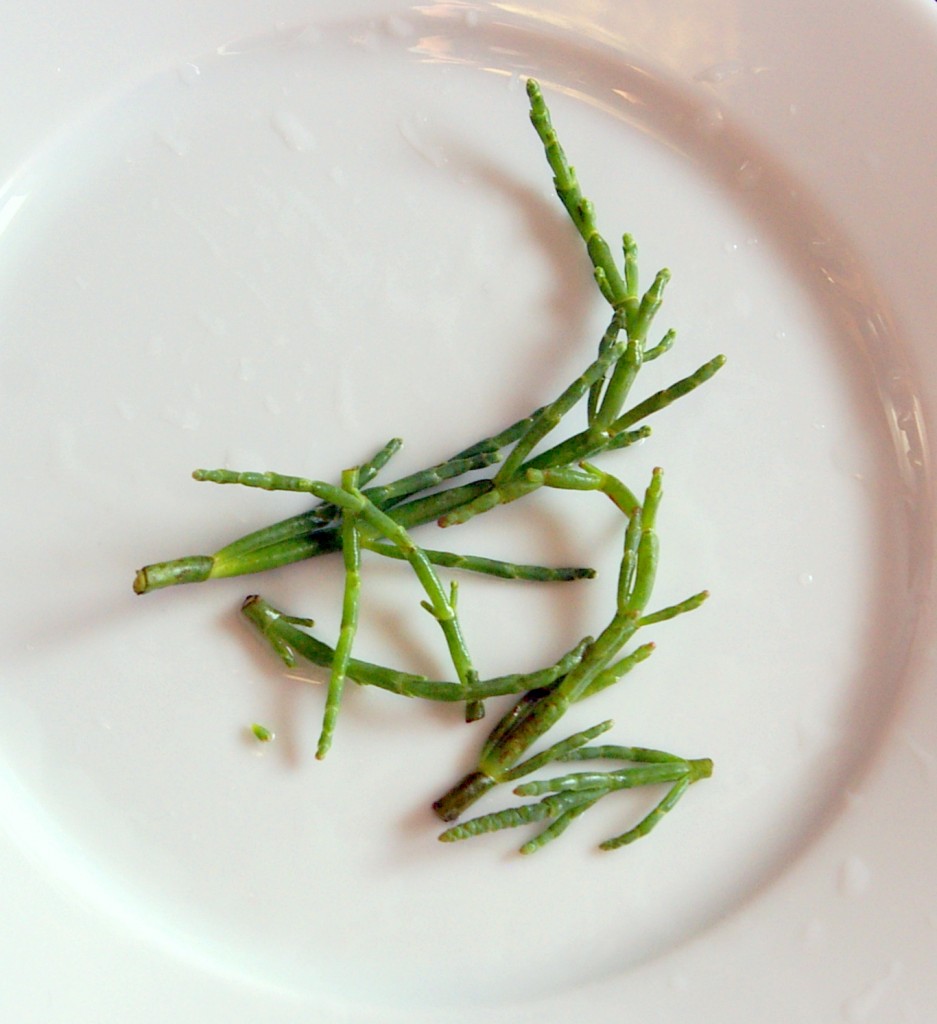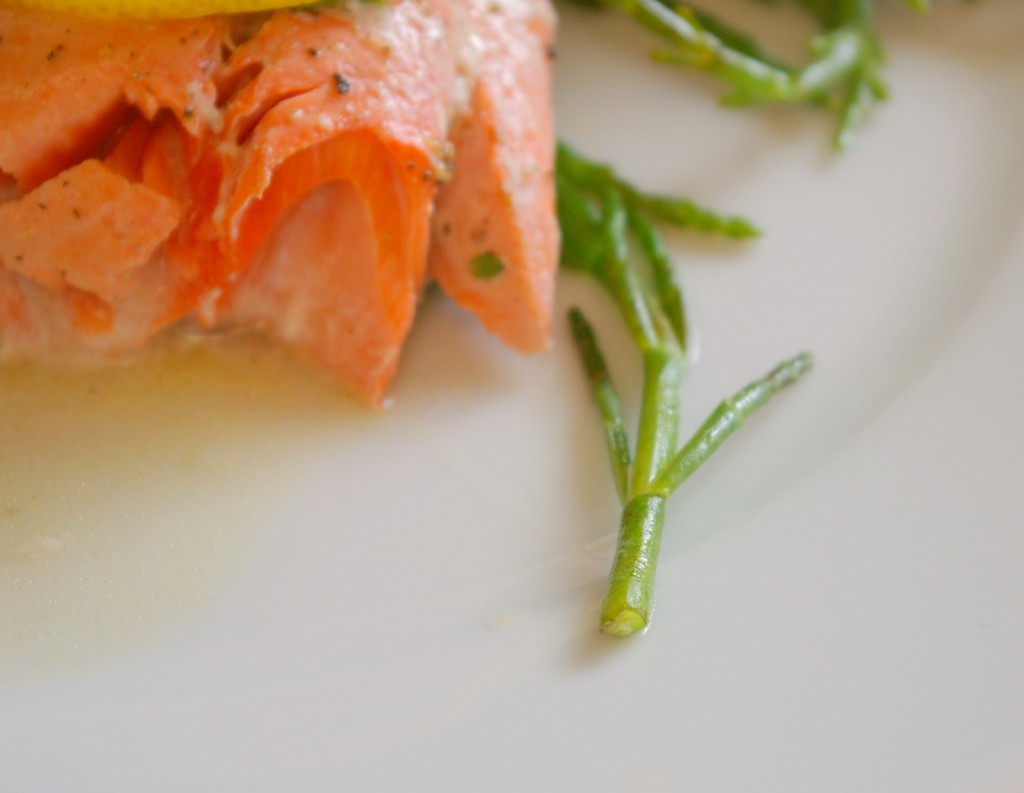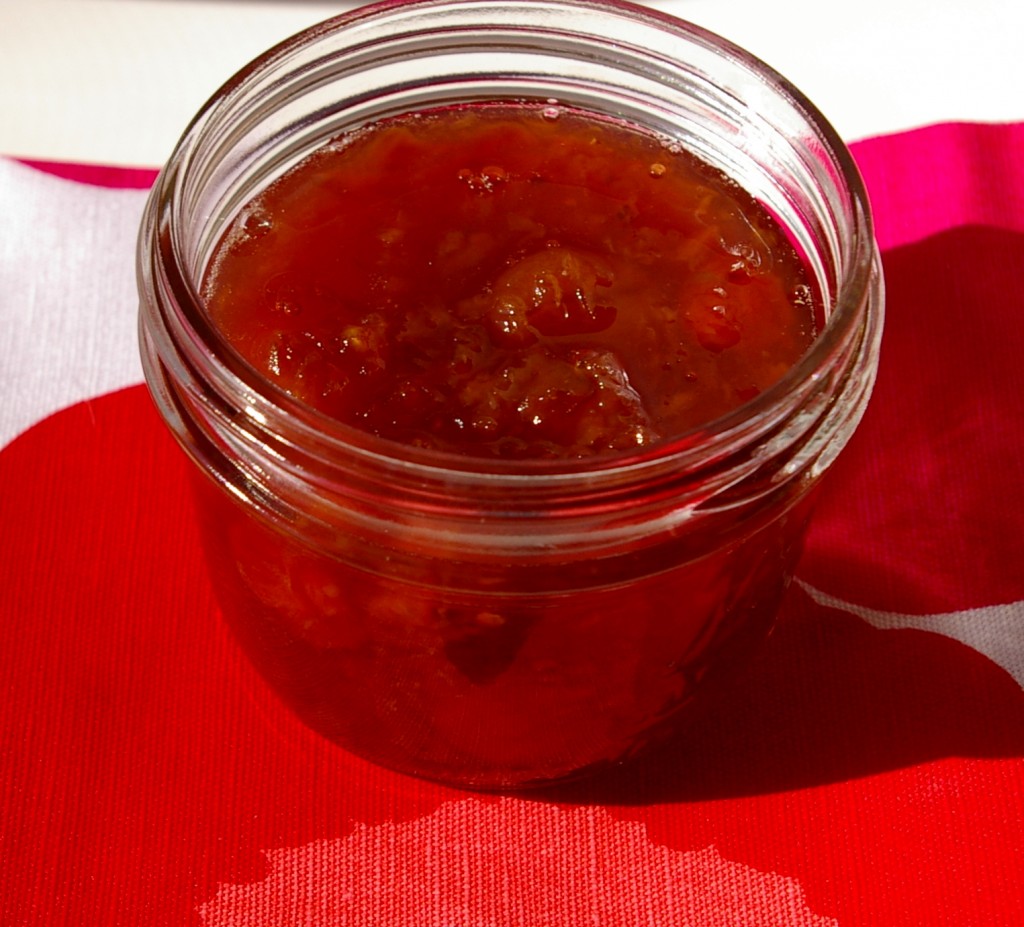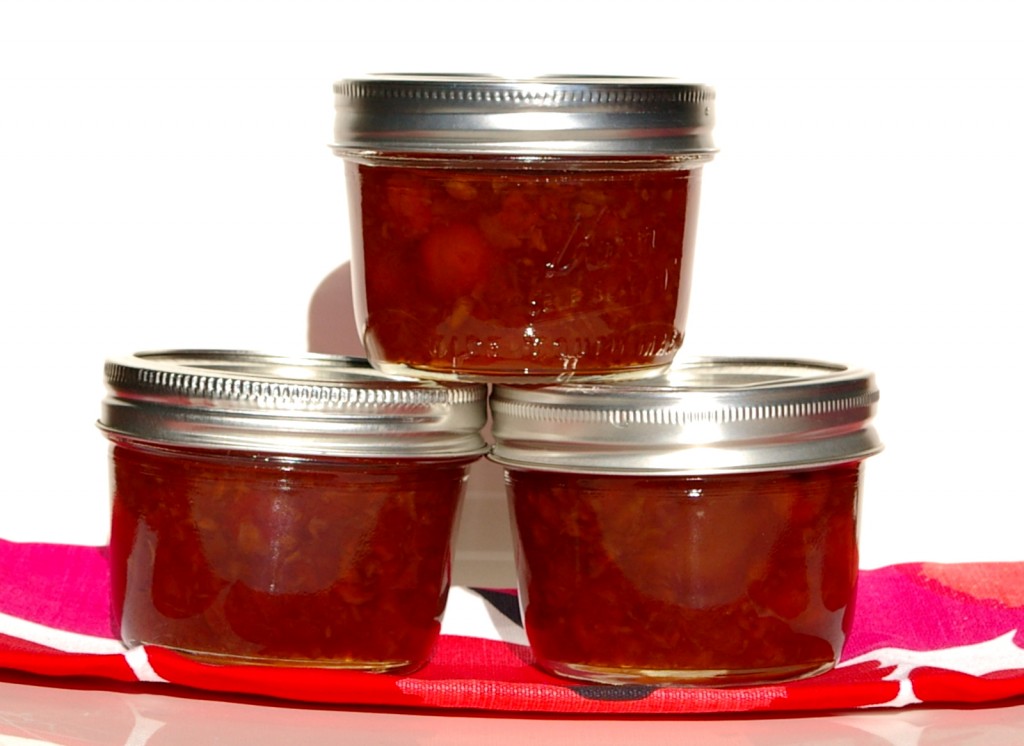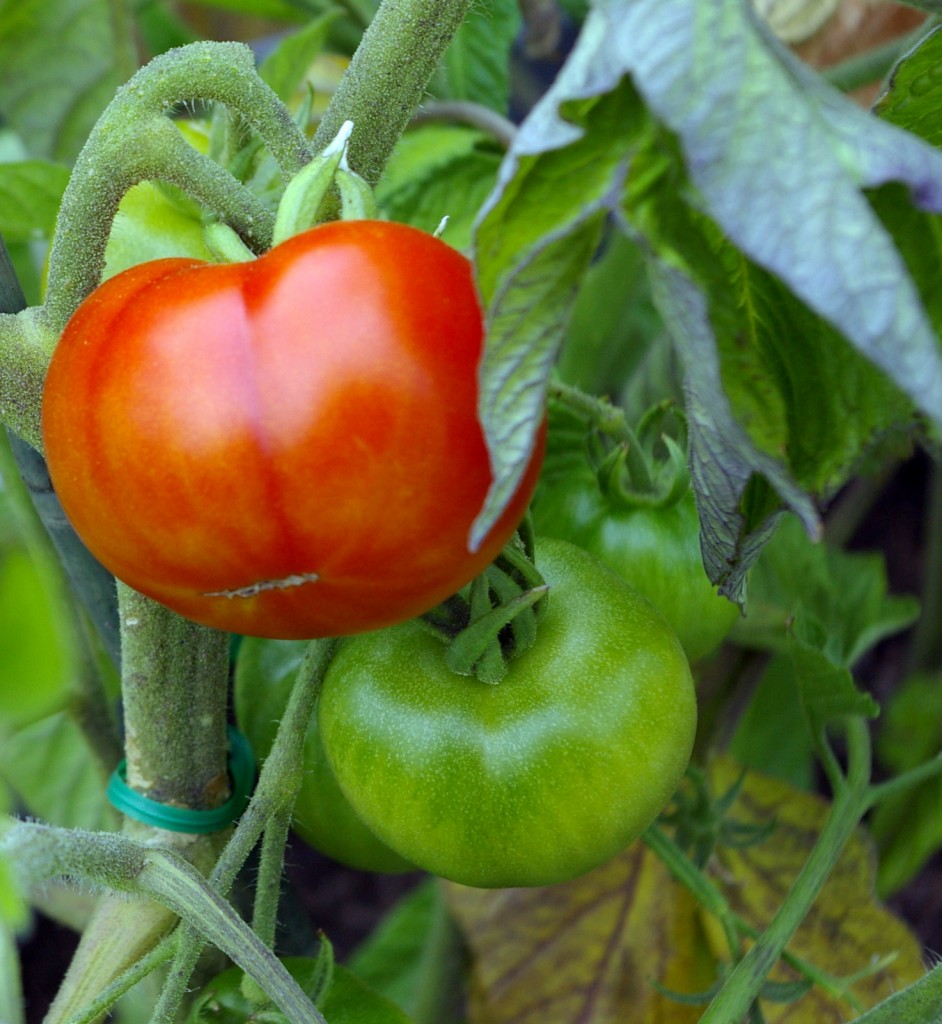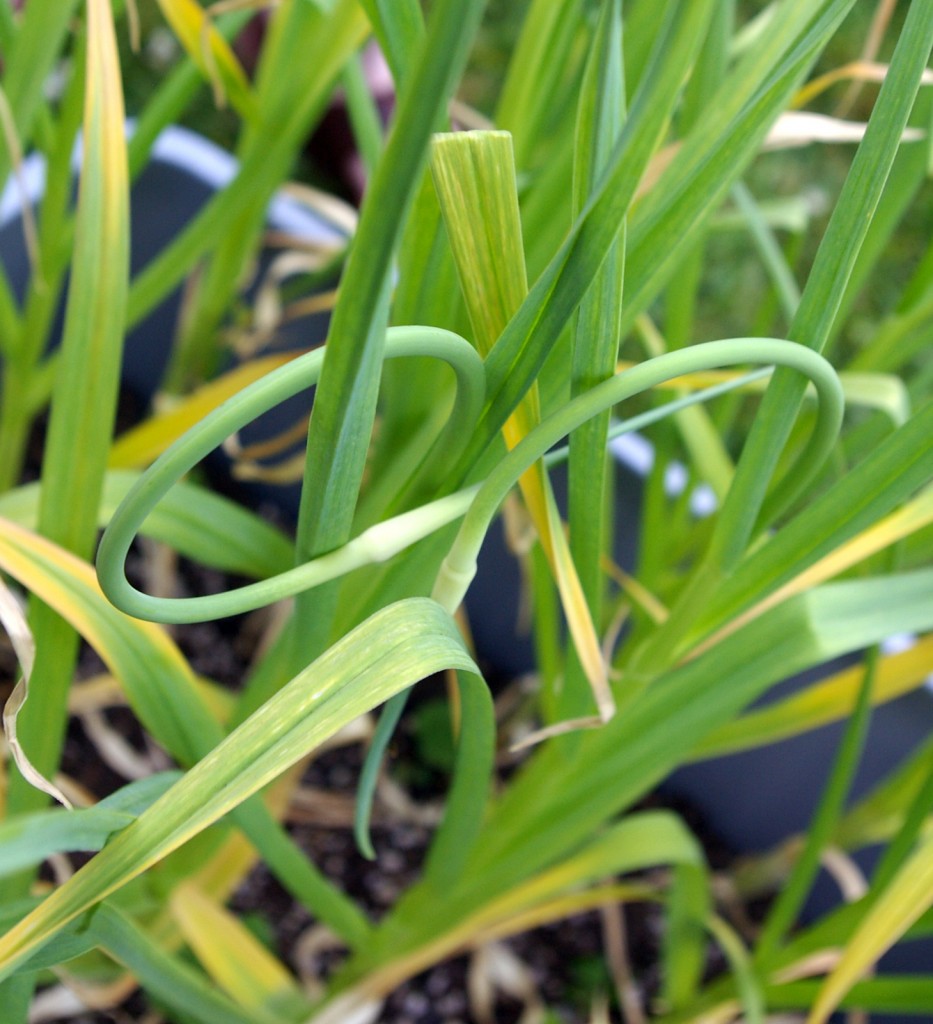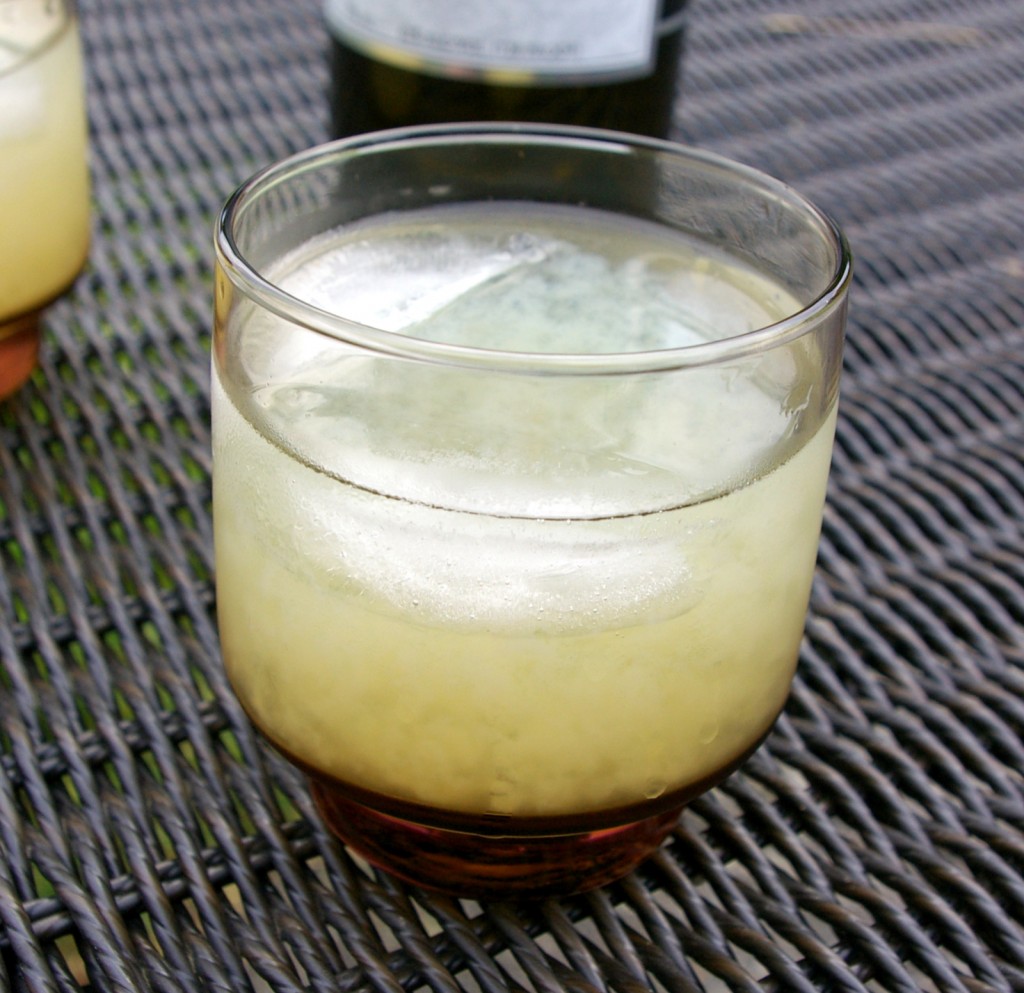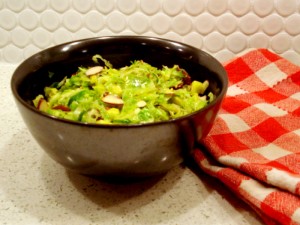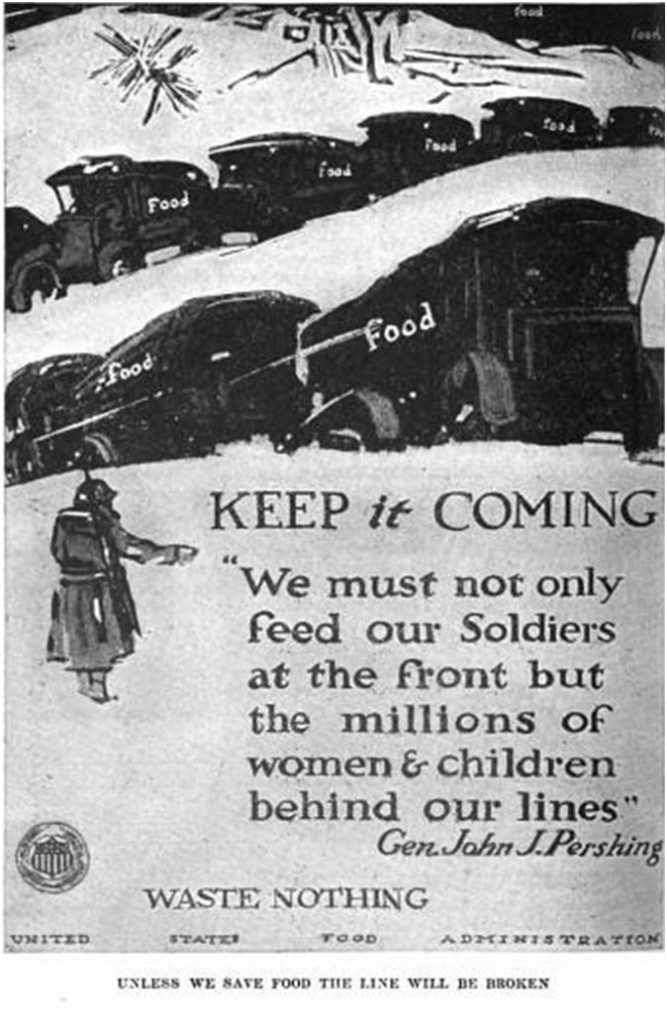Posts in Category: Food History
A Few of My Favorite Things: Samphire
Two summers ago, I had samphire for the first time. Â I was a teaching assistant for a Shakespeare course and having a nice dinner in Stratford-upon-Avon and with a fellow T.A. when I bit into an an amazing, salty vegetable. Â My waiter called it samphire, which sounded delightfully exotic. Â Then I remembered watching King Lear the week before and hearing the lines:
Come on, sir; here’s the place: stand still. Â How fearful
And dizzy ’tis, to cast one’s eyes so low!
The crows and choughs that wing the midway air
Show scare so gross as beetles: half way down
Hangs one that gathers samphire, dreadful trade!
Methinks he seems no bigger than his head. (4.6.15-20)
Edgar says these lines to Gloucester as he peers over one of Dover’s cliffs and sees an unlucky man gathering Rock Samphire. Â Thus began my love of samphire!
The salty annual you see pictured above is Marsh Samphire, which grows as an annual in marshy regions of the United States and England. Â It’s best to forage samphire during the spring and summer, although I found these at the Ballard Farmer’s Market last weekend. Â In the U.S., samphire is called Sea Beans or Glasswort, but I still call it samphire (a derivation of Saint Pierre, apparently). Â It’s sometimes called Glasswort because it was used in glass-making because it was so salty.
Tonight, I sautéed some salmon and added the samphire for the last few minutes of cooking, just to blanch it.  It’s crunchy, salty, tangy, and a perfect accompaniment to seafood.  It’s gaining popularity right now in the culinary community, and I wouldn’t be surprised if you start to see samphire/sea beans/glasswort showing up under your seafood or pickled, in your bloody mary.  (The most common way to eat samphire in many vintage recipes is to have it pickled.)
Sautéed Samphire with Thyme and Vermouth
1 tbsp. butter
1 tbsp. olive oil
2 tbsp. vermouth
1 tbsp. chopped thyme leaves
3 cups samphire/sea beans/glasswort
salt and pepper to taste
a squeeze of lemon
1. Heat skillet and add butter. Â Stir until melted. Â Add olive oil and vermouth and stir until mixed.
2. Add samphire and thyme. Â Bring liquid to a simmer and cover with lid for 5 minutes.
3. Uncover and add salt, pepper, and a squeeze of lemon juice. Â Stir until samphire is well-coated.
4. Â Serve with seafood!
(I poached my salmon in the butter, olive oil, and vermouth mixture (along with a little water) and then added the samphire for the last 5 minutes!)
Cooking like Grandma
Part of the reason why I love vintage recipes, especially handwritten ones, is that they’re not as rigid as the recipes in today’s cookbooks. Â It’s a mixed blessing, since there have been times I’ve experimented with a handwritten recipe and had it turn out horribly. Â (A few of my friends got to experience my rhubarb-custard pie last month that turn into a rhubarb quiche!)
As users of contemporary cookbooks, which over-explain every slice and dice, we don’t have a file of recipes in our heads. Â For instance, I never saw my grandmother cook a pie using a recipe. Â By the time I came around, she knew all the twists-and-turns of her recipe for pie crust. Â A recipe would have held her back!
The same goes for making simple jellies and jams, so you can imagine how happy I was when I ran across David Lebovitz’s “recipe” for Cherry Jam. Â My neighbor emailed me to let me know that she had some extra cherries from her tree — since they were pie cherries (sometimes called sour cherries), I knew immediately that I wanted to make some cherry jam. Â I mixed these pie cherries with some Rainier cherries and I have to say, it’s some of the best cherry jam I’ve had! Â I left about a quarter of the cherries whole, which Mr. Lebovitz recommends, and I have to say, they are my favorite part. Â The jam was a perfect addition to my morning toast–tart, sweet, and tangy. Â I didn’t have any kirsh and (in my gleeful haste to put my perfect jam into jars) I forgot to add the almond extract and the jam is still a winner!
Reviving a Corpse, and Other Tales
Kevin has been making an awesome ‘new’ drink lately.  He takes gin, lemon juice, cointreau, and absinthe–gives it a good, hearty shake, and I’m telling you, creates my new favorite drink of the summer!  What is this magic drink, you ask?  A corpse reviver!  And I promise you, this drink will (as this 1867 publication on London Life suggests) “fill us with extraordinary courage and determination.  Our self esteem rose by fifty percent, and with it, our indignation!”  Yes, that quotation is actually referring to a drink called a Corpse Reviver, but I’m not sure it’s the same drink to which Kevin keeps returning.
As I’ve posted previously, Seattle has been a rainy mess. Â Spring came and went without a real hint of sun. Â It’s only the past week that we’ve seen any hot weather. Â This California girl is loving the 90 degree temperatures (and our tomato crop is as well). Â We actually have a ripening tomato, folks!
Isn’t it beautiful? Â Tonight, we sat in our backyard, sipped a Corpse Reviver, and marvelled in the changes our garden has gone through in the past few week. Â Our garlic is finally growing scapes that are turning in their familiar circles, like little kitchen timers.
But back to the fabled drink!  There are two distinct recipes for Corpse Revivers.  One, involves maraschino cherry juice.  We will not speak of that one.  The second, based on a recipe from the 1930s Savoy Cocktail Book, comes from a recipe I found in the Washington Post.
Corpse Reviver #2 for Two
4oz. gin
4 oz. cointreau
4 oz. lemon juice
4 oz. Lillet Blanc
1 1/2 tsp. absinthe (we’re big fans of Pacifique Absinthe by Pacific Distillery)
1. Add ingredients to cocktail shaker along with ice and pour into cocktail glasses of choice. Â We used our favorite Libby old-fashioned glasses we found at a local estate sale.
**Don’t be alarmed if your drink gets a little cloudy! Â Absinthe reacts with water (much like unfiltered whiskey) and forms the infamous la louche.
The Much-Maligned Sprout
I sing to thee of a humble sprout, made delectable with darkened butter, tart lemon, and toasted almonds!
Most everyone has bitten into an over-cooked Brussels sprout, ripe with glucosinolate sinigrin, which–according to Wikipedia–gives off a sulfurous odor and is probably the reason behind the widespread dislike of the poor little cabbage.  But cooked correctly, the Brussels sprout is a vegetable of an epic nature (hence my earlier invocation).  Indeed, Fanny Merritt Farmer includes Brussels Sprouts with Curry in her cookbook, Food and Cookery for the Sick and Convalescent, as an aid for diabetes.  Judging by the numerous recipes for Brussels sprouts available from the early twentieth century in Google books, they were quite popular.  In most of my mid-century cookbooks, nary a Brussels sprout is to be found, which makes me wonder if many 1950s cooks avoided them because of bad childhood experiences!
Then, as I mentioned earlier this week, I found my New York Times Cookbook. Â Claiborne has two recipes for Brussels Sprouts: one with caraway seeds and another with browned butter. Â He suggests that Brussels sprouts should be cooked whole, with a gash in the stem. Â I prefer slicing the sprouts ever-so-finely instead, so my take on his recipe reflects that. And apologies for the horrible photo — the whole bunch was a little off-color, even with correction.
Brussels Sprouts with Browned Butter and Toasted Almonds
(adapted from the 1961 New York Times Cookbook)
1 pound Brussels sprouts, finely sliced
2 tbsp. butter
1 tbsp. olive oil
2 tbsp. lemon juice
1/4 c. sliced almonds, toasted
salt and pepper to taste
1. Â Preheat oven to 350. Â Place almonds on a baking sheet and toast for 10 min.
2. Â Slowly melt 2 tbsp. of butter in frying pan and cook until just starting to brown.
2. Add olive oil and Brussels sprouts and sauté for 3-4 minutes.
3. Remove Brussels sprouts from heat and add lemon juice, almonds, salt and pepper.
Et voilà ! We had ours with some halibut poached in white wine and lemon juice.  It was a wonderful dinner!
Go visit Foodie Friday for more yummy recipes!
A Horse Walks into a Bar
The above photo is from Aquavit to Zombies, a cocktail guide published in 1957 that I found at a local thrift shop.  As I flipped through its alphabetized entries, I found a cocktail that was unfamiliar to me.  Not that I know the name of every cocktail on earth, but the ones made up of simple ingredients tend to be the most long-lived and popular.  Why, then, hadn’t I heard about a Horse’s Neck?  Here’s what Aquavit to Zombies had to say on the matter.
Tamale Pie: Day 4ish
Kevin and I went to see Chicago last night, so we were bad bloggers and didn’t have time to post. Â Fear not, dear readers, we have an extra-special recipe of Tamale Pie for you today from Recipes from the St. Anthony Community Hospital Guild Pocatello, Idaho, published in 1971. So, thank you Ruth A. Bogert for giving us the wildest version of Tamale Pie I’ve ever seen!!
 First of all, I love that each recipe in this cookbook is handwritten by the members of the Hospital Guild. Â Secondly, as I mentioned above, Ruth’s recipe is not your run-of-the mill Tamale Pie! Â First of all, she includes four different types of protein instead of just the usual two. Â Ruth adds veal and smoked ham into the protein mix, which gives an added flavor boost to the dish. Â She also adds a can of stuffed olives instead of the much-loved black olives. Â I’m assuming the type of olives Ruth had in mind would be pimento-stuffed olives, which would give her Tamale Pie some added spice.
First of all, I love that each recipe in this cookbook is handwritten by the members of the Hospital Guild. Â Secondly, as I mentioned above, Ruth’s recipe is not your run-of-the mill Tamale Pie! Â First of all, she includes four different types of protein instead of just the usual two. Â Ruth adds veal and smoked ham into the protein mix, which gives an added flavor boost to the dish. Â She also adds a can of stuffed olives instead of the much-loved black olives. Â I’m assuming the type of olives Ruth had in mind would be pimento-stuffed olives, which would give her Tamale Pie some added spice.
Finally, Ruth’s recipe highlights something that Kevin and I have been noticing in a few recipes we’ve found: instead of layering the protein and cornmeal, this recipe mixes everything together, creating a meat-loaf of sorts. Â My grandmother’s recipe for Tamale Pie (which she used when she worked as a lunch lady at the local school district) is also of this variety. Â I’m not sure when this type of Tamale Pie started, but it makes the recipe easier and it also makes the dish accessible to more cooks since it resembles more common dishes like meat-loaf.
Tamale Pie: Day Three
In my quest to research Tamale Pie for you, dear readers, I tracked down another recipe that was included in a book called Our Country’s Call to Service: A Manual of Patriotic Activities Through the Schools, published in 1918. Â (The entire book is freely available here!)Â Â I bet you didn’t know that Tamale Pie was patriotic, did you? Â The recipe is featured in a section called “Saving Food,” where wives are tasked to conserve supplies during wartime. Â The cookbook includes the following illustration just pages before the recipe for Tamale Pie.
Tamale Pie is included in a section on Meat Pies called “Meat Saving Recipes” that “make a little meat go a long way” in an attempt to conserve food during World War I.
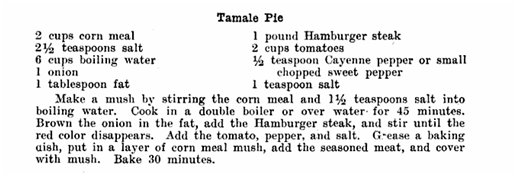 As you can see, the above version of Tamale Pie distills the recipe to its most basic ingredients in order conserve as much money and food as possible. Â Unlike many of the later versions of Tamale Pie, this early version is made without expensive dairy products.
As you can see, the above version of Tamale Pie distills the recipe to its most basic ingredients in order conserve as much money and food as possible. Â Unlike many of the later versions of Tamale Pie, this early version is made without expensive dairy products.
Tamale Pie: Day Two
Can I go an entire week just posting about Tamale Pie? Â SHOULD I post about Tamale Pie for an entire week? Â Probably not, but I’m going to try!
Today’s example of Tamale Pie comes from Sunset’s Kitchen Cabinet Recipes, vol. 3 from 1944. Â And it’s not just any old Tamale Pie recipe, it’s a vegetarian version, complete with an illustrated guide! Â Although I have to say that my commenter, Dushenka, is right — I would definitely add beans to the mix as well!
Tamale Pie: Day One
This week, A Bit of Butter is dedicated to the Tamale Pie! Â Below, I’ve included some standard versions of Tamale Pie from vintage cook books and recipe cards. Â In searching for recipes, I kept a pretty strict definition for what Tamale Pie should include: mainly, a cornmeal crust. Â There are other taco casseroles that call themselves Tamale Pie (and I’ll probably post a few of these later in the week), but for now, here are a few standard recipes for this long-lived casserole.
I have to hand it to Tamale Pie, it’s been around an awfully long time, and aimed to give home-cooks a convenient method for making tamales without numerous steps.  The Oxford Companion to American Food and Drink lists the Capitol Cookbook from 1899 as the first to include a recipe for Tamale Pie, but this one has a wheat-flour crust instead of the ubiquitous corn meal that most Tamale Pies use.  The earliest version that uses cornmeal, is a recipe from the Los Angeles Times Cook Book, No. 2, published in 1905, which features “old-time California, Spanish and Mexican dishes”.  In the American Century Cookbook, Jean Anderson writes that Tamale Pie gained popularity during World War I as a vegetarian main dish (148).  But it wasn’t until the second World War when recipes for Tamale Pie exploded into a full-blown trend.
Like the recipe found in the L.A. Times, Sunset’s Kitchen Cabinet Recipes, vol. 3 (pictured above), published in 1944, uses both ground pork and beef for protein, which gives the dish a more complex flavor profile. Â It also takes the recipe farther away from the standard tamale by adding corn kernels, tomato, and other ingredients.
